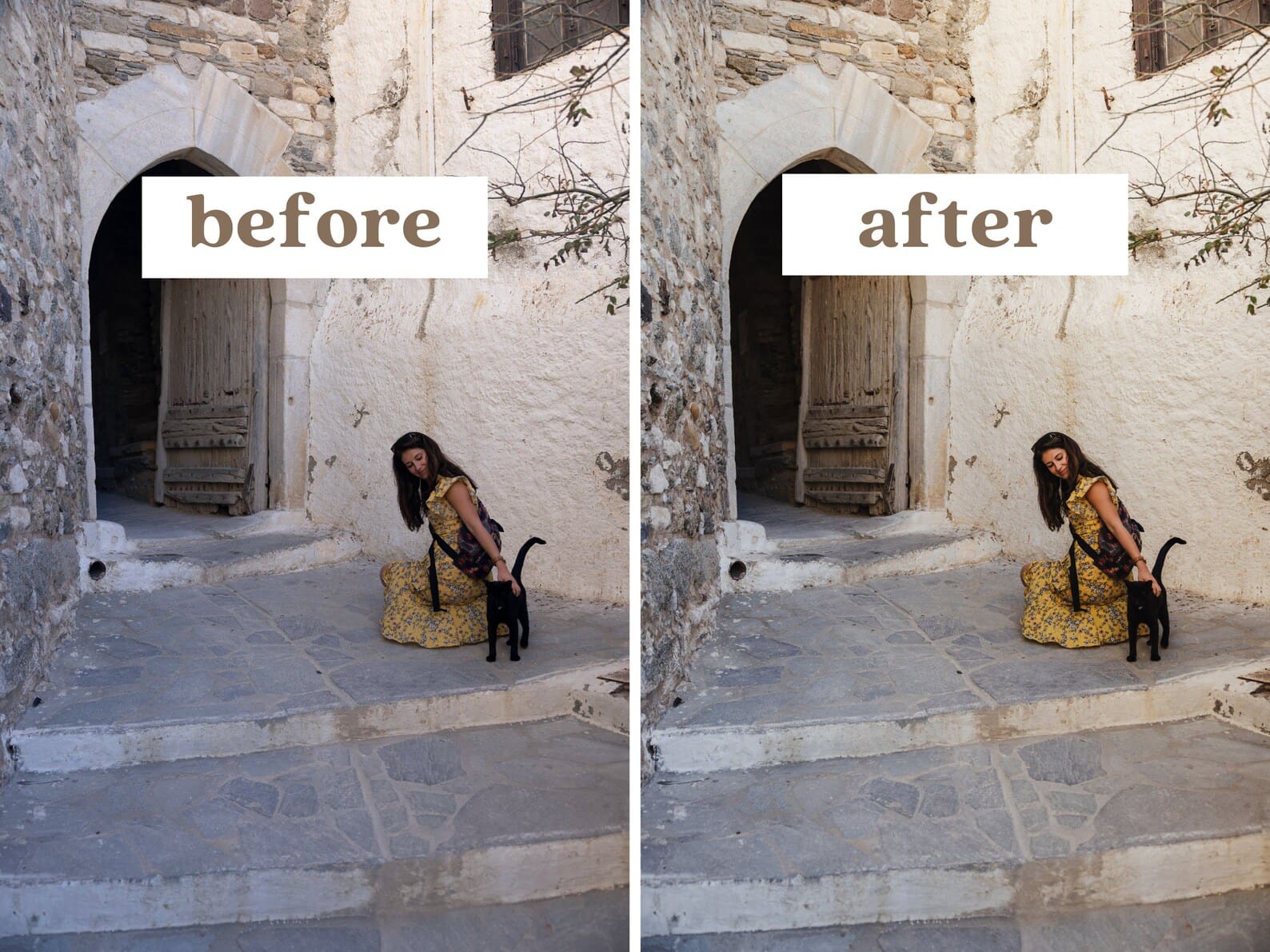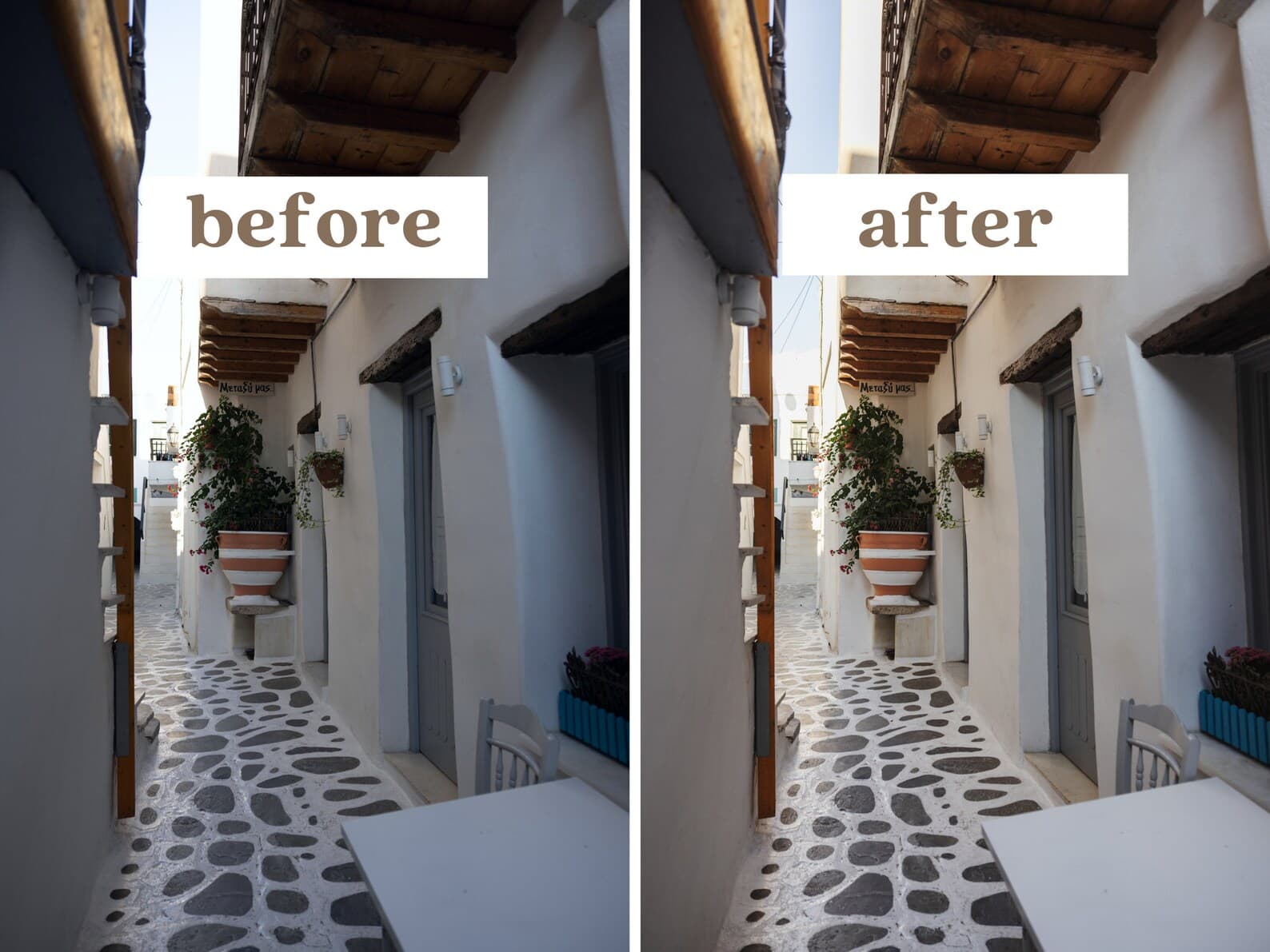Tips and tricks for editing in Lightroom

This post may contain affiliate links which means I may receive a commission for purchases made through links.
I only recommend products that I have personally used long term. Learn more on my Privacy Policy page.
Lightroom is one of the tools I use most often in my business. If you’re just starting out, it can feel a little overwhelming! Over the years, I’ve picked up so many of my favorite Lightroom hacks and tricks that have leveled up my editing speed and consistency, which has helped me to feel more confident in my editing skills.
Using a program like Lightroom or Photoshop allows you to edit and render RAW images, which really confused and scared me in the beginning. I only photographed in JPEG and was really afraid to make the jump to RAW. I’m so glad I finally switched, and I will never, ever go back to photographing in JPEG.
Tools I use with Lightroom
- Loupedeck – keyboard for faster and more precise editing
- External hard drive – to store my images and my Lightroom Catalog
- Mac desktop – where I do the bulk of my editing
- iPad/phone – for edits on the go on Lightroom mobile
- Pic-time with Lightroom plugin – to upload the photos, create galleries and share with my clients

My favorite Lightroom hacks
- Set reference photo: I love using this to compare photos to see if my editing is consistent. I’ll set a reference photo from an image that I like the editing of, and then scroll through the rest of the gallery to see if everything looks consistent side by side.
- Quick Develop Panel (Library Module): Maybe my favorite Lightroom tool. This is perfect for doing bulk edits. I’ll select the images that need the exposure bumped up and do it in one click.
- Previous Button vs. Sync: When editing similar photos, using ‘previous’ copies settings from the last image. ‘Sync’ copies across multiple images – watch out for masks and cropping though!
- Color Labels for Workflow Stages: I use color labels to mark stages of editing—red for culled, yellow for needs retouching, green for export-ready.
Lightroom Mobile: Sync and edit from anywhere
I feel like my special sauce is using Lightroom Mobile in my workflow. You can sync each collection to Lightroom Mobile either on your phone or your iPad. I personally use both, but really love using my iPad.
Once the photos are synced to my device, I can have access (when I have wi-fi) to a smaller smart preview version of the photo and start editing or culling. One minute I’m editing on my desktop, and the next, I’m at a doctor’s appointment culling my images while waiting for the doctor.
Have Lightroom or editing questions? Pop them into my Facebook Group – Photography 101
How I upload my photos to Lightroom
I personally keep my RAW photos stored on my external hard drive that I’m able to travel around with, edit on the go, and not have to worry about my computer storage filling up.
- Create a folder on hard drive for each session
- Name it the DATE-NAME-LOCATION
- Upload to Lightroom
Organizing Lightroom
There are SO many ways to set up your Lightroom program, and it might be confusing at first. You’ll see catalogs, albums, collections, and different modules like develop and library. It will eventually all fit into place, but just know the program will take some time to learn and get used to!
Adding a Catalog
When you first open Lightroom, your catalog will open. Your catalog is your main hub. Think of this as the biggest or the tip of the pyramid. Your catalog will host the project that you’re working on and have uploaded.
There are many ways to set up your catalog in Lightroom, but I recommend starting simply. I typically create one catalog 2x per year to keep things organized. I will name this catalog ‘2025 CATALOG.’
Some people prefer a catalog for each session for speed and organization, but I find having all my projects in one catalog more convenient for my workflow. Note that you can only have one catalog open at a time, which is another reason why I stick to my workflow.
Albums and Collections
Within each catalog, there are albums or collections where individual sessions are organized. For each photo session, I’ll upload as a new collection and then make sure I click sync to since to all my devices with Lightroom. This system allows me to access all my photos in one place on multiple devices and access to edit and cull on the go.
Culling in Lightroom
Culling in Lightroom, especially on mobile, makes it so quick and easy to select the best images to edit and deliver. I use flags and ratings to organize my selections, with the “P” key to flag an image as a pick and the “U” key to unflag. I find Lightroom Mobile to be much faster to load and swipe.
- “P” to flag as a pick
- “U” to unflag (I just skip over the ones I don’t want and don’t flag them at all)
- “1–5” for star ratings
Once I cull my photos, I’ll go back and add a color tag to separate out the images. I like to do this for different locations and lighting situations so I can copy and paste my edits in those sections.
Lightroom keyboard shortcuts:
You can speed up your editing in Lightroom by using keyboard shortcuts. Using shortcuts has really made my editing flow faster and more intuitive.
- “D, G, E” = To swap between modules
- “Z” = Zoom
- “R” = Crop tool
- “Command + Z” (or Ctrl + Z) = Undo
- “Q” = Spot removal
Editing workflow
White Balance
I always start with correcting my white balance before applying a preset and starting my edits.
Starting with a preset
I apply my preset to every photo to add my ‘base’ editing style. Then, I adjust each image individually as needed, and depending on what each photo needs, like shadows, blacks, contrast, etc. Starting with the preset that I created helps to keep my look and style cohesive and starts me off with the perfect color palette.

Basic Editing Tools
This is where I spend most of my time – the basic panel under the develop module.
For each photo, I may adjust:
- exposure, contrast, highlights, shadows, whites, and blacks. If the lighting is tough, I may use dehaze or saturation.
Color correction
The color mix section allows for detailed adjustments to hue, saturation, and luminance for each color. I love to use this for perfecting skin tones or adjusting specific colors in your image. This is already added in my preset so I try to leave it for consistency, but will edit when I come across a tricky lighting situation.
Additional Editing Features
- Color Grading: For achieving different effects or a film look.
- Effects Panel: Including texture, clarity, dehaze, and vignetting for further refining your images.
- Detail Panel: For sharpening and noise reduction.
- Optics and Geometry: Useful for lens correction and adjusting tilts or distortions.
- Masking: These tools are getting better and better! I use masking for adjusting certain parts of the images as needed if dealing with difficult lighting.
- Healing: No need to edit in Photoshop. I can remove most of the signs or cluttered backgrounds with Lightroom tools.
- Straighten/crop: No photo is complete without perfecting the crop to make the subject pop out more or straightening the horizon to make the image that much better.
Tips for cleaning up your Lightroom
If Lightroom is running slow for you, there are a few things you can do!
- Check your storage on your computer or harddrive to make sure you have plenty
- Upgrade the RAM on your computer
- Create a new and fresh catalog
Other photo editing software options
While Lightroom is probably the most used photo editing software for professionals, there are a few other options to choose from!
- Lightroom CC – probably the most popular among photographers, from professionals to beginners. There are various versions, from the free mobile version (which I highly recommend anyone download) to the paid option, which is what I use. I love how compatible it is with so many other programs.
- Photoshop – Photoshop is a more artistic photo editing program with lots of special effects and features. Many boudoir or other artistic photographers love using Photoshop for the advanced techniques you can apply to each image.
- Capture One – a similar editing program to Lightroom and its biggest competitor, but not as popular. They relatively do the same job and both are great options to consider for editing your photos as a professional.
- Adobe Bridge – A less popular editing option is another Adobe program, Adobe Bridge. I’ve seen photographers use Bridge for culling their images as well as editing and color correcting.
Why I switched from Photoshop to Lightroom
- I first started with Photoshop in 2008, editing each image one by one. After a couple of years, I finally switched to Lightroom and never looked back.
- Lightroom has continued to come out with major updates and more advanced tools, so I don’t need to open Photoshop. While I still use Photoshop, I typically only use it for advanced editing or hard removals.
Final tips
Consistency is key with learning how to edit your photos in Lightroom! It took me a long time to feel confident in a workflow that worked for me and my photography business. Hopefully this helps you pick up some tricks for your Lightroom workflow and perfecting your consistency!
Hi! I'm Kelsey!
My photography journey started in 2009 when I fell in love with documenting moments and capturing people in their element.
12 years ago, I moved to the amazing little mountain town of Breckenridge, Colorado, from Raleigh, North Carolina.
Wild to say I've photographed over 300 weddings and portrait sessions all over. I started this small but mighty team of local mountain photographers to capture whatever season of life you're in.
300+
200+
50+
15+
weddings photographed
pets photographed
destinations
photo sessions
@greenhousecreativestudios
Summit county, colorado photographer serving breckenridge, dillon, keystone, frisco and beyond
resources for couples
for photographers
branding
copyright 2025, greenhouse creative studios, all rights reserved - PO Box 1140, Dillon, Colorado 80435
greenhouse Creative Studios
By Kelsey Booth Photography
est 2010
We may use cookies to better your experience. Scrolling this website confirms that you have read and agreed to our privacy policy and terms of use
©2025 Greenhouse Creative Studios
close x